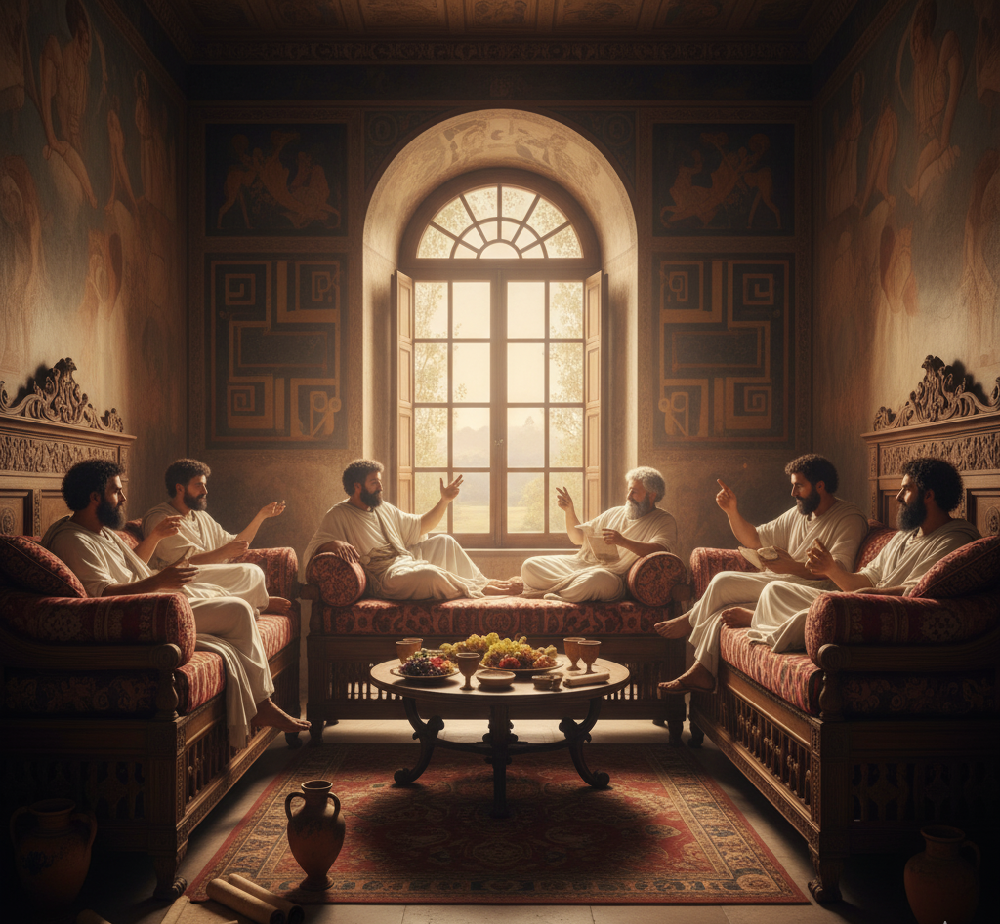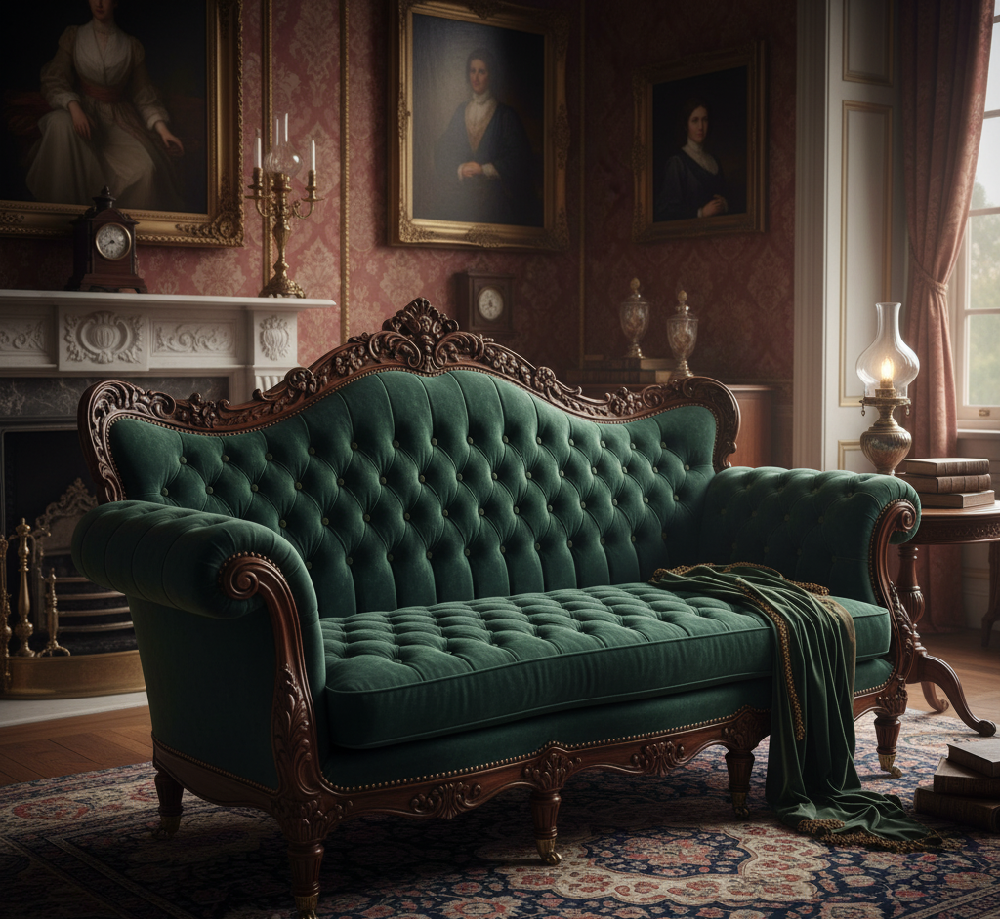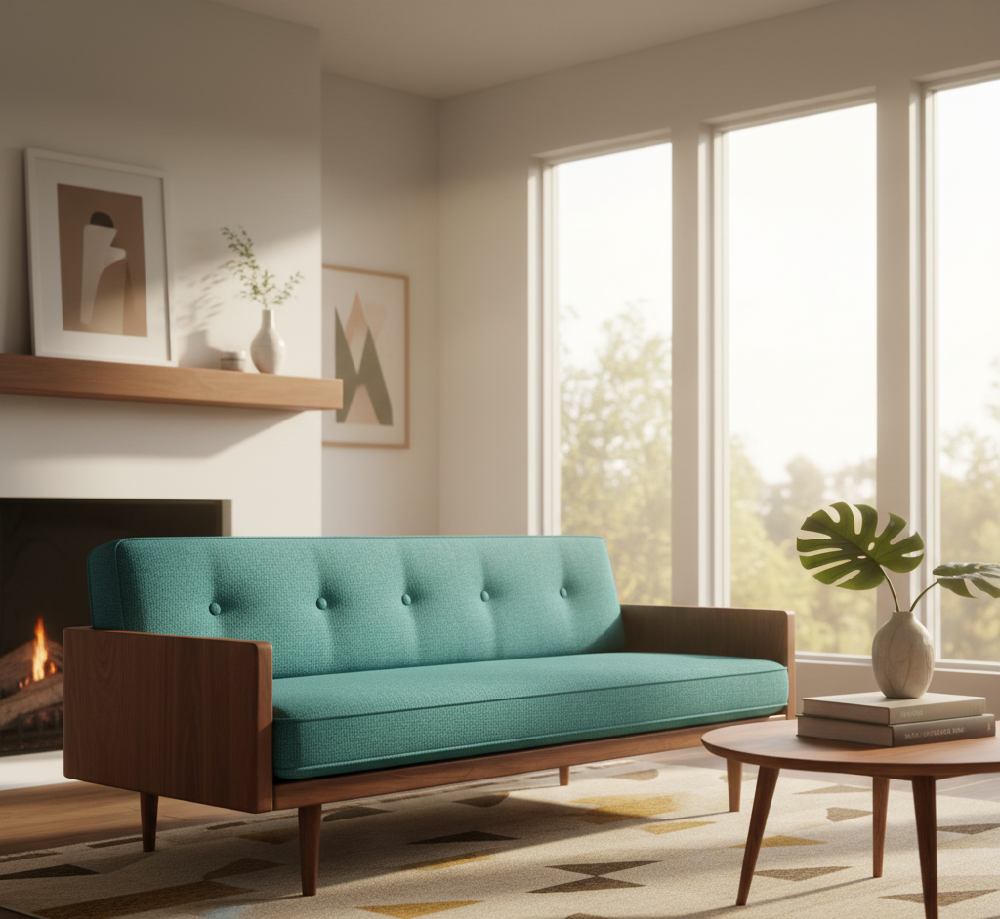Sofa Evolution: How the Couch Changed from a Symbol of Power to Home Comfort
The couch, the sofa, the settee—whatever you call your favorite place to unwind—is more than just a piece of furniture. It’s a cultural artifact whose story spans millennia, reflecting shifts in architecture, technology, and what we define as comfort. From the earliest elevated seating to the meticulously crafted pieces of today, the sofa has always held a special place in human society, silently witnessing countless conversations, moments of relaxation, and the unfolding of domestic life.
If you’ve ever wondered when were couches invented or how are sofas made, you're exploring two distinct, fascinating histories: the chronology of the concept and the construction of the object. This deep dive will not only illuminate the sofa's rich past but also equip you with the knowledge to discern quality in modern furniture, ensuring your next purchase is an informed investment that will stand the test of time.
Part I: Sofa History: When Was the Couch Invented? Tracing the Origins of Cushioned Seating
The upholstered seating unit has followed a dual evolution: a slow cultural journey from a simple bench to a complex piece of furniture, intricately intertwined with advancements in domestic living and the evolving science of materials.
Revamp your living room! Discover the perfect carpet colors to pair with your brown leather sofa in our new styling guide.
2000 BCE: The Ancient Status Symbol – The Dawn of Elevated Seating
The foundational concept of cushioned, raised seating began in Ancient Egypt around 2000 BCE. These early forms, while far removed from our modern understanding of a plush sofa, established the fundamental idea of specialized, comfortable seating—a privilege reserved for the powerful.
-
The Original "Sofa": These predecessors were essentially raised wooden frames fitted with rudimentary cushioning, often made from natural fibers or woven materials. The very word "sofa" itself speaks to this ancient lineage, deriving from the Arabic term suffah, which translates roughly to "bench" or "a raised platform for sitting." This etymological link highlights the enduring concept of a designated, elevated sitting surface that offered a modicum of comfort above the floor.
-
A Symbol of Power: In this early era, comfortable seating was not a common commodity. It was strictly reserved for the wealthy elite, such as pharaohs, serving as potent symbols of authority, prestige, and divine connection rather than accessible comforts for the populace. Imagine a pharaoh observing his court or receiving petitioners from a beautifully crafted, cushioned bench—a clear visual indicator of his elevated status and distinction from the common folk. These early "thrones" were statements of power.
7th Century BCE: The Classical Refinement – Reclining for Leisure and Learning
Classical civilizations subsequently adopted and refined the concept of elongated, cushioned seating, firmly linking it to dining, social gatherings, and intellectual pursuits. These societies began to integrate comfort into their daily rituals, though still largely confined to the upper echelons.
-
The Greek Kline: Around the 7th century BCE, the Greeks introduced the kline, a reclining couch that was integral to their banquets (known as symposiums) and scholarly discussions. These weren't just for eating; they were central to a culture of intellectual exchange, convivial leisure, and the consumption of wine and philosophical discourse. The kline encouraged a relaxed posture conducive to long discussions and feasts.
-
The Roman Lectus: The Romans later enhanced this idea with the lectus, embedding reclining couches even more firmly into their culture of dining and leisure. Roman dining rooms, or triclinia, were specifically designed to accommodate multiple lecti, allowing guests to recline while being served elaborate meals. However, this luxurious comfort remained profoundly class-bound. While the elite reclined in opulent comfort, lower-class Romans, often referred to as 'plebs,' generally utilized less comfortable stone benches or simpler seating arrangements, highlighting the enduring social stratification associated with comfortable furniture.

HOW TO CLEAN LEATHER COUCH. Get the expert guide to deep cleaning, conditioning, and 100% odor removal. Your sofa deserves it!
The Dark Ages Decline and Renaissance Revival – The Sofa's European Hibernation
Following the collapse of the Roman Empire in the 5th century, the cultural significance and physical presence of the upholstered sofa entered a prolonged state of decline across Europe, often referred to as the Dark Ages. During this tumultuous period, complex, comfortable seating largely disappeared, replaced by utilitarian wooden benches or stools that were far more practical for the less stable living conditions of the time.
The physical decline of the sofa was intrinsically linked to the architectural conditions of the era. The widespread lack of stable, insulated, and weatherproof housing meant that storing and maintaining delicate upholstered furniture was impractical and often uneconomical. Fine textiles and stuffing materials would easily degrade in damp, drafty environments. The eventual revival of comfortable seating in Europe was directly contingent upon the emergence of more robust and weatherproof domestic structures by the late 16th century, which provided a stable and protected environment suitable for preserving fine upholstery and intricate craftsmanship.
Interestingly, while the furniture form itself declined in Europe, the linguistic root persisted. The term suffah continued to exist within Turkish and Arabic cultures, referring to a raised section of the floor covered with carpets and cushions in Eastern interiors, a continuous tradition of comfortable, elevated seating. This linguistic continuity allowed the word to re-enter the English language by the 1620s, demonstrating a fascinating, albeit non-European, unbroken lineage of this form of cushioned seating.
The late 16th century marked the true start of the sofa's revival in Europe, as European craftsmen, inspired by a renewed interest in classical forms and improving domestic conditions, began reimagining and creating seating designs beyond simple benches. This Renaissance era spurred Italian artisans to craft elaborate benches and settees, which, while beautiful, were still a far cry from modern comfort.
However, initial comfort levels were rudimentary. Early European upholstery involved stuffing cushions with crude, readily available materials such as horsehair, hay, and dried moss. This emphasis on accessibility and availability over refinement meant that many Renaissance couch designers stressed form over function, producing pieces characterized by elaborate craftsmanship and skillful detailing on the wooden frames. These visually stunning masterpieces were generally stiff and formal, offering only a glimpse of the plush comfort that would define later furniture. By the 17th century, upholstery fully emerged as a fashionable symbol of luxury, particularly among French nobility, successfully blending aesthetic design with an elevated, if still rudimentary, level of domestic comfort.
19th Century: The Revolution in Comfort – Springs, Tufting, and Opulence
The 19th century ushered in a profound technological shift that would fundamentally transform furniture design: the introduction of internal springs. This innovation was crucial because it allowed cushioning to retain its shape and offer sustained, resilient support for significantly longer periods than traditional stuffing materials like horsehair, which would compact and sag over time. Coil springs specifically made their pivotal appearance around the 1820s, marking a turning point in furniture comfort.
The dominant aesthetic of the 19th century was defined by the Victorian era (1830s–1900), which heavily embraced the ornate Rococo style. Victorian couches were designed with elaborate detailing, featuring flowing, curling wood carvings and a heavy, imposing silhouette. Key design characteristics included higher backs, deeply set button tufting, and tightly rolled arms, all contributing to a sense of grandeur and formality.
Construction during this period relied on traditional, labor-intensive methods, utilizing solid, dense hardwoods (such as oak or mahogany) for frames. Joinery involved meticulously hand-cut mortise and tenon joints, often secured with wooden pegs rather than modern nails or staples, a testament to the era's craftsmanship. Stuffing remained traditional, consisting of materials like horsehair, hay, and coconut fiber (coir). Crucially, the deep button tufting, so characteristic of Victorian and Chesterfield styles, was not merely decorative; it was a structural necessity for holding these loose, fibrous stuffing materials in place and preventing them from shifting, clumping, and losing their shape.

20th Century: The Rise of Modernism and Mass Production
The turn of the 20th century introduced a significant reaction against the Victorian preoccupation with ornamentation, leading to a profound shift in aesthetic sensibilities. The Edwardian era (1901–1910) favored lighter, more elegant proportions and a less cluttered look. This stylistic departure continued with the rise of Mission-style furniture, which championed minimalism, favored clean lines, and utilized strong, often 90-degree angles, profoundly influencing interior design throughout the first half of the 20th century.
The post-World War II era solidified the age of mass production, making upholstered seating widely accessible to a broader demographic than ever before. Design shifted dramatically toward cleaner lines and lower profiles, demanding further material innovation to accommodate these new aesthetics without sacrificing comfort. This technical change was largely facilitated by the development of serpentine, or sinuous, springs, which began appearing in mid-century pieces and revolutionized how suspension systems were integrated into furniture.
The technological necessity driving this aesthetic change is paramount: traditional hand-tied coil springs require substantial vertical depth within the furniture frame to function correctly. The serpentine springs, in contrast, require much less vertical space, effectively flattening the profile of the suspension system. This reduction in necessary internal frame volume allowed furniture makers to achieve the sought-after lower profiles characteristic of iconic Mid-Century Modern designs without compromising the quality of the suspension or the sitter's comfort.

